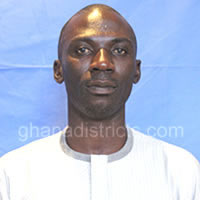Senior Secondary School was taken as the highest order, as far as education within the Municipality is concerned. Two areas were identified with such a facility namely, Techiman North and Techiman South. However, areas in the north have high access to Senior Secondary School education because, apart from Techiman Township with only one highest education, all the other Senior Secondary School facilities were located in the bigger towns in the north i.e. Buoyem, Aworowa and Tuobodom.
This situation was designed by the Ghana Education Service, possibly to avoid too many people coming to Techiman township for the only SSS facility. In the Techiman township itself, physical access to a SSS is considered very high because of the easy movement from Techiman to other areas for such facilities. Again, many people find it easy and convenient to locate at Techiman and move out to other areas within the Municipality to access SSS education, because physical accessibility is easy here.
The education sector since the start of the education reforms has been driven by several objectives including those aimed at closing the gender gap in access to education as well as improving the quality of education. There was also a commitment to providing free quality education at the basic level to all children of school going age by the year 2005. These goals and objectives are identical to the Millennium Development Goals.
The Municipality is endowed with 121 Nursery Schools with an enrolment of 10,825; 178 primary schools with enrolment of 30,303 and 75 Junior Secondary Schools (JSS) with 9196 students as well as 6 Senior Secondary Schools with enrolment of 3,899 students as at 2005. There is also one Technical school.
School Enrolment and Teachers
Enrolments in schools have witnessed significant growth since 2003. Table 1.9 show the gross enrolment figures and staffing levels in the Municipality for both public and private schools at the basic and SSS levels.
The rapid growth rates in enrolment over the years have resulted in a significant deficit in school infrastructure namely classrooms, workshops and furniture. The introduction of the capitation grant in 2005 especially has led to tremendous increase in enrolment at all levels of basic education in the public schools. The resultant effect is an increase of 2,689 pupils at Nursery level, 2,439 pupils at primary level and 1,122 pupils at junior secondary levels.
While this trend is positive for the Municipality’s schools enrolment drive, the policy has necessitate the urgent provision of additional 380 pieces of 5 seater desks, 630 dual desk and 360 pieces mono desks. 188 additional classrooms are urgently needed to address the acute situation at the basic level, which has compelled authorities to hold classes in the open, under trees. It is also to address the overcrowding in classrooms leading to poor teaching and learning and to maintain the momentum of enrolment and retention at the basic level.
School Quality
Pupil-Teacher Ratio (PTR)
The pupil-teacher ratio (PTR) of all levels shows that there are enough teachers in the Municipality. However, there is uneven distribution of teachers in the Municipality in favour of the urban areas. For example whilst schools in Nsuta are understaffed, Techiman central schools are overstaffed. What is required is the rationalisation/redistribution of teachers by the Education Directorate to ensure that every school gets its fair share of teachers, especially in the deprived areas.
Teacher Qualification
The Nursery levels have only 29.7% qualified teachers, with 89.1% qualified at the primary level. The junior secondary school level records the highest number of qualified staff with 93.2%. The issue of high proportion of untrained teachers especially at the basic level, need to be addressed to improve the quality of education. Hence the policy of sponsorship for teacher-trainees by the Municipality needs to be vigorously pursued.
Basic Education Certificate Examination (BECE)
The percentage pass was 58% in 2005 as compared to 56% in 2004. This calls for concerted efforts by all stakeholders to further improve the results.
Teacher Housing
Poor and inadequate teacher accommodation, especially in deprived communities was identified as one of the problems for refusal of teachers to accept postings or stay in some communities. Lack of suitable accommodation and other basic social amenities has resulted in about 40% of teachers commuting daily from the relatively endowed urban centres especially Techiman to their schools in the deprived areas. This results in lateness, absenteeism and loss of pupil-teacher contact hours.
There are twenty (20) teacher bungalows and six (6) teachers housing units in the Municipality However, these are woefully inadequate, considering the enormity of the housing problems in the Municipality. It was also identified that although some of the housing units have been completed, they were nit in use, because electrical power connection, which are available in the communities have not yet been extended. There is also urgent need to address the teacher housing problem to attract and retain teachers to the deprived communities.
Other problems confronting the education sector include poor water and sanitation facilities especially at the basic levels. Many schools lack potable water and gender friendly sanitary facilities. Poor sanitation facilities and public hygiene may result in poor health status. This may lead to high rate of absenteeism due to ill-health and high drop-out rate.
Date Created : 11/21/2017 2:10:43 AM





 facebook
facebook twitter
twitter Youtube
Youtube TOLL FREE 0800 430 430
TOLL FREE 0800 430 430 +233 593 831 280
+233 593 831 280 GPS: GE-231-4383
GPS: GE-231-4383 info@ghanadistricts.com
info@ghanadistricts.com Box GP1044, Accra, Ghana
Box GP1044, Accra, Ghana